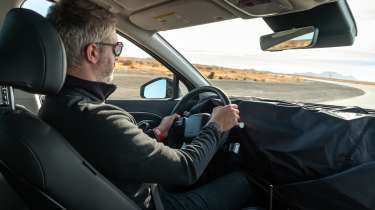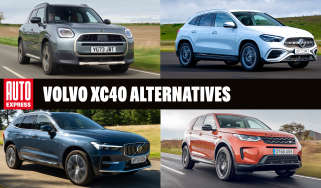New Hyundai Ioniq 9 prototype review: early drive shows EV's huge potential
We take a drive in the new flagship Hyundai Ioniq 9, but certain things must be left to the imagination
Verdict
Due to the limitations placed on our test, it’s difficult to deliver any kind of definitive verdict on how the new Hyundai Ioniq 9 drives. What we can say is that it feels like a quick, comfortable and spacious family car with a strong range and class-leading charging capability; we look forward to driving the production car in 2025.
A few weeks before the covers came off the all-new Hyundai Ioniq 9 at the 2024 Los Angeles Motor Show, Auto Express was treated to a sneak peek of the brand’s flagship family car in a windowless studio somewhere in West Hollywood, California.
So secretive was this media preview, we were asked to sign a fairly hefty non-disclosure agreement, and had our phones and cameras taken away. Hyundai was taking no risks while ensuring its new Volvo-fighting halo electric car avoided the usual pre-reveal leaks.
But to give us a greater sense of what’s to come, we later boarded a bus to Hyundai and Kia’s California Proving Ground – a sprawling 4,300-acre facility deep in the desert, about 100 miles north of the bustling metropolis. Here, we’d get a chance to sample the Ioniq 9 on a variety of roads, albeit in a heavily camouflaged pre-production model, covered in cladding both inside and out.
This, as we would later find out, would have a significant impact on our driving impressions. Our first stint included a full lap of the 10km (6.2-mile) high-speed oval. We were following a pace car, but because the dashboard – including the car’s digital instrument cluster – was covered in thick fabric, we were unable to ascertain exactly how fast we were going. While the Ioniq 9 seemed quiet at low speeds, there was noticeable wind whistle from around the A-pillars as we picked up the pace.
The car felt largely stable at what we’d assume was 70mph or more, however. Ride comfort was just the right side of firm – it was comfortable enough on the smaller wheels of our test car, but we’d like to try the largest 21s before making any judgement on top-spec versions.
Just as we didn’t really know how fast we were going, it was difficult to draw any relevant conclusions on the various drive modes. Cycling through the settings, the car mostly showed strong initial acceleration that tailed off at the top end – though again, with the dashboard covered, it was difficult to know exactly how the car was set up. The Ioniq 9 gets Hyundai’s familiar paddle-operated regenerative braking system, which works as well here as it does in its other models – including a progressive and intuitive one-pedal drive mode.
We were also given the chance to take the Ioniq 9 through a twistier section comprising tight corners and longer, sweeping bends. It’s clear even from our limited experience that Hyundai’s biggest EV has been tuned to be safe and predictable at the limit; it’ll readily push into understeer if you’re too late on the brakes into an abrupt right hander, for example. We’d need to test them back to back to be sure, but on this evidence, a Kia EV9 feels ever so slightly more agile – and a five-seat BMW iX would undoubtedly show the Hyundai a clean pair of heels on a brisk back route.
But where it really matters, the Ioniq 9 excels. It is spacious in all seven seats, with even those in the very back getting a decent amount of head and leg room – and not at the expense of those in the middle row. There’s a huge boot, and the various seating configurations mean you can prioritise people or luggage.
We did also get a chance to play around with the infotainment system on the studio car, and while the graphics aren’t perhaps as cutting-edge as you’ll find in the BMW, or a Volvo EX90, the functionality is there, and it’s all contained within a premium-feeling curved panel spanning a good chunk of the dash. The quality inside the Ioniq 9 is very good, and easily befitting of the car’s predicted £65,000-£70,000 starting price.
Finally, while we didn’t get a chance to test the range or charging capabilities, Hyundai claims up to 372 miles (346 miles on this dual-motor model) on a full battery – and the ability to top up from 10 to 80 per cent in 24 minutes. Peak charge speeds haven’t been disclosed, but a 230-240kW estimate puts the new car right at the top end of the segment, and ensures that if you do need to stop and plug in, it won’t be long before you’re back on the move again.
| Model: | Hyundai Ioniq 9 AWD |
| Price: | £70,000 (est) |
| Powertrain: | 110kWh battery, 2x e-motors |
| Power/torque: | 309bhp/TBC |
| Transmission: | Single-speed auto, four-wheel drive |
| 0-62mph: | 6.8 seconds |
| Top speed: | 124mph |
| Range: | 346 miles (est) |
| Charging: | 230-240kW (est), 10-80% in 24 mins |
| Size (L/W/H): | 5,060/1,980/1,790mm |
| On sale: | Mid-2025 |









